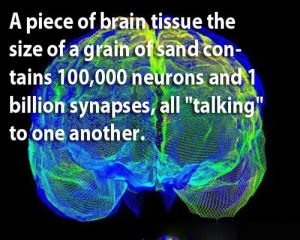
The human brain is a wonderful thing. Modern humans have been schooled to the idea that we are alone are conscious–sentient. As  conscious beings we can travel mentally through time and draw on the past to experience the present and plan for the future. In what is called ‘classical’ thought, humans alone are capable of this. Humans alone are capable of a wide and deep range of emotion such as empathy. Only humans appreciate esthetics and are capable of enjoying beauty. Only we are capable of ethical thinking. These are our chains.
conscious beings we can travel mentally through time and draw on the past to experience the present and plan for the future. In what is called ‘classical’ thought, humans alone are capable of this. Humans alone are capable of a wide and deep range of emotion such as empathy. Only humans appreciate esthetics and are capable of enjoying beauty. Only we are capable of ethical thinking. These are our chains.
But setting ourselves apart from the rest of the world conflicts with recent science. Giulio Tononi, a professor at the University of Wisconsin-Madison has explored the relationship of human consciousness to, of all things, quantum mechanics. He is researching why we ” steadfastly perceive the world in terms of classical, independent systems — rather than one big interconnected quantum mess.” link
Older cultures would not use the term quantum mess, but philosophy of panpsychism was well regarded until the 20th century. The mind (psyche) is everywhere (pan): Plato and Thales were proponents; Spinoza; mathematician Leibniz; Shopenhauer; the father of American psychology, William James; Jesuit paleontologist Teilhard de Chardin all wrote compellingly about and were advocates of the principles of panpsychism. link
But it almost seems creepy to imagine bacteria and viruses making ethical decisions and debating the esthetics of some new chemistry wonder they come up with. Plants? They are thinkers. They make plans based on past experience; they sift information and solve problems. For example, they use “complex trickery or provide snacks and advertisements (colors) to lure in pollinators, communicating either through direct deception or rewards. New research finds that some plants even distinguish between different pollinators and only germinate their pollen for the best.” link
And their creations are drop dead beautiful.
In the book, Brilliant Green: the Surprising History and Science of Plant Intelligence, plant neurobiologist Stefano Mancuso and journalist, Alessandra Viola write with certainty that plants are conscious or sentient. They do not have a single powerful brain, but a million tiny computing “structures that work together in a complex network.”
Most plants can survive removal of up to 90% of their mass.This “survival” plan has resulted in plants comprising more than 99 percent of the biomass of Earth. Animals, including whales, insects and humans make up less than one percent. link That is a lot of thinking. But all this thoughtfulness is not a new idea. The intelligence of plants has been accepted by Goethe, Luther Burbank, George Washington Carver, Masanobu Fukuoka, Jagadis Bose, Nobel Prize-winner Barbara McClintock and Darwin.
Of course, the Plantswoman is on that list. Next week I will go into more detail, but this week I am confessing that it is challenging to imagine living in a world roiling with intelligent beings. It seems like a noisy place. I suppose I am pulling on my chains. I have been taught that the mental anguish of what is ethical, what is beautiful, what is real was limited to a small percentage of life, limited to humans.